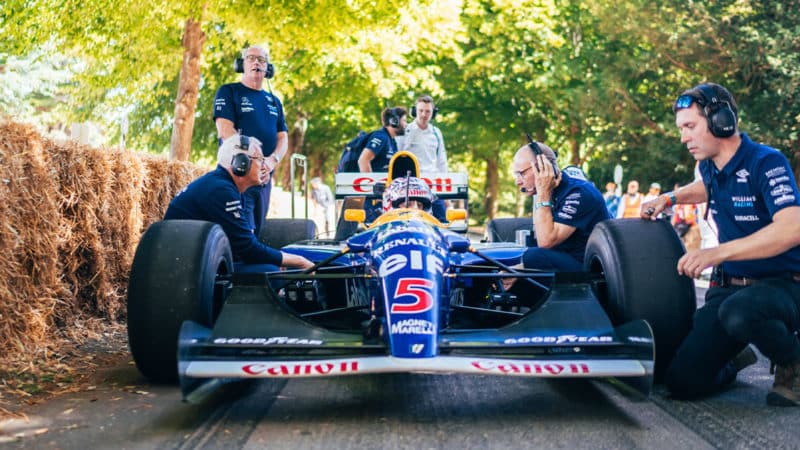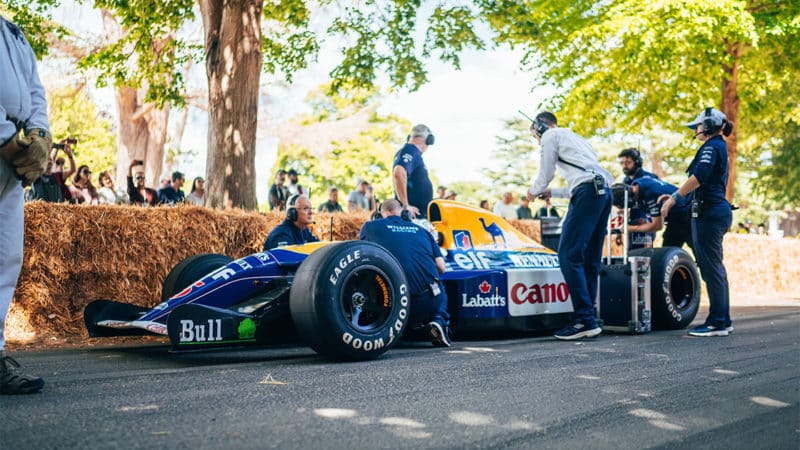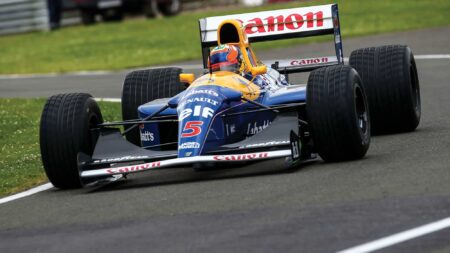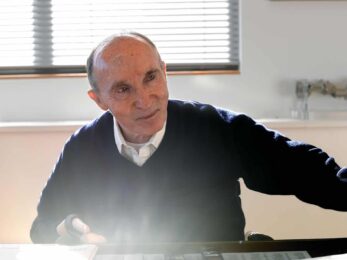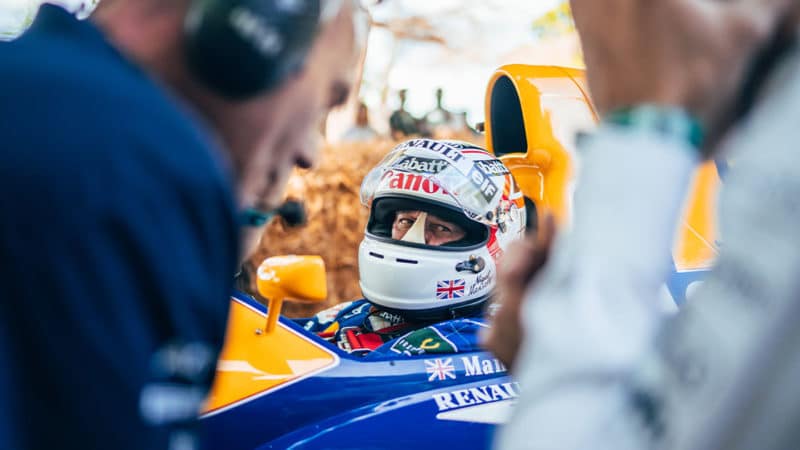“The main standout feature when you look at a 14B – and to tell it from a 14 or a 15C – is where the top wishbones go into the chassis, there’s a sort of a bulge on either side. That’s where the active suspension sits on the top of the chassis. That’s the only place that the team could put it, they’ve basically dumped it on the top. For ’93 they packaged it more compactly into the car.”
Some of Mansell’s idiosyncratic alterations on the car come into play when looking after the car in the modern day.
“It’s really annoying actually to wheel around car parks, because of the smaller steering wheel – Mansell’s preference – that is set quite far in under the chassis. Moving it around is very difficult.”
It’s not all mechanical trickery, as this car was born in a period when F1 was moving into the digital age, with software devised for its active system by legendary engineer Paddy Lowe. Therefore Williams Heritage has to work with software used at the time to get the 14B up and running.
“Operating the computer system is really the main thing with the suspension and car, as well as reading the reading the data that comes off it,” Morton says.
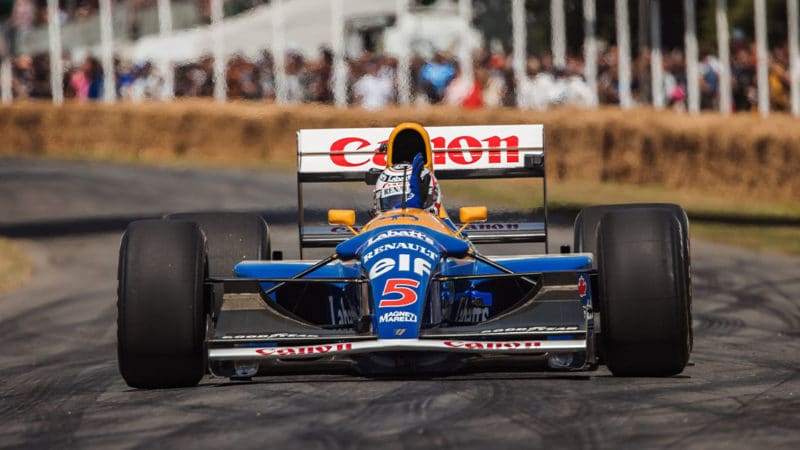
Ride height is adjusted for each circuit by the team and driver
Williams
“It’s old school. We’ve got one computer that reads the data card that comes out of the car, and it’s literally put into an old, beige, ‘Tower of Power’ desktop computer on our truck – we still rely on that.
“We’ve got a couple of guys in Heritage who raced this car in period which massively, massively helps as well, as do a couple of guys in the electronics department who helped assist Paddy do all the clever stuff back in the day.”
Though the team doesn’t get too deep into a system which can be complicated at the best of times, it still utilises the active suspension to make the 14B more comfortable in its surroundings.
“We can adjust the right height as per the circuit, and there’s two main different ways to adjust it,” Morton explains.
“One is by the push rods, like any passive car, which we ran at Goodwood this year, when we raised the ride height mechanically.
